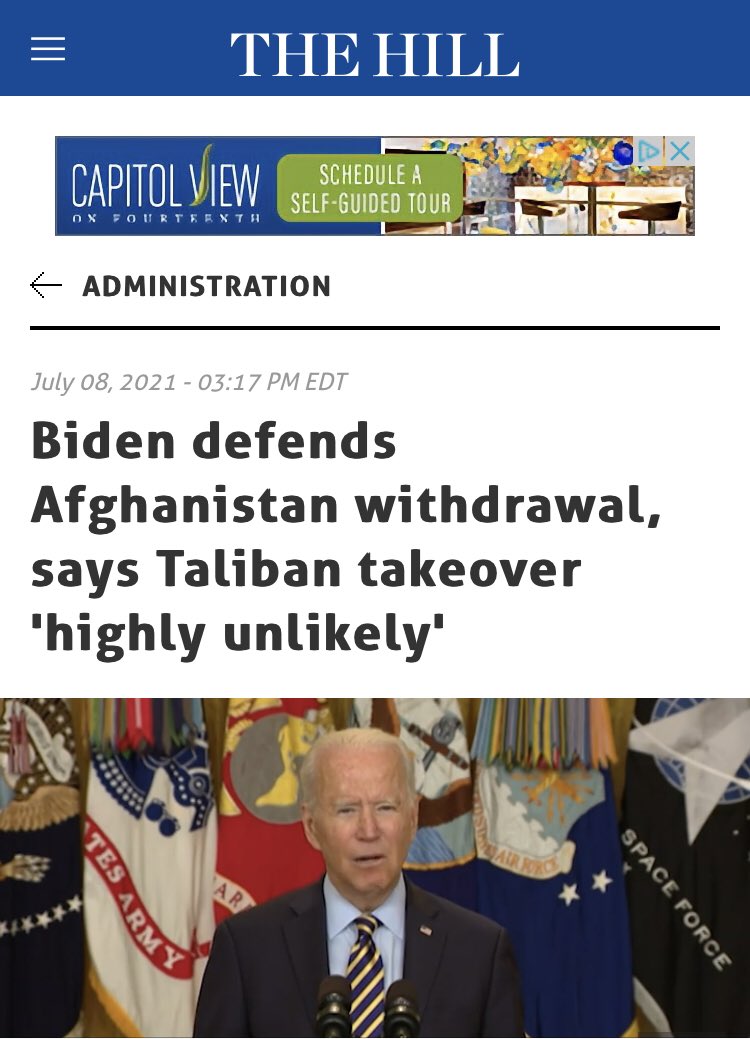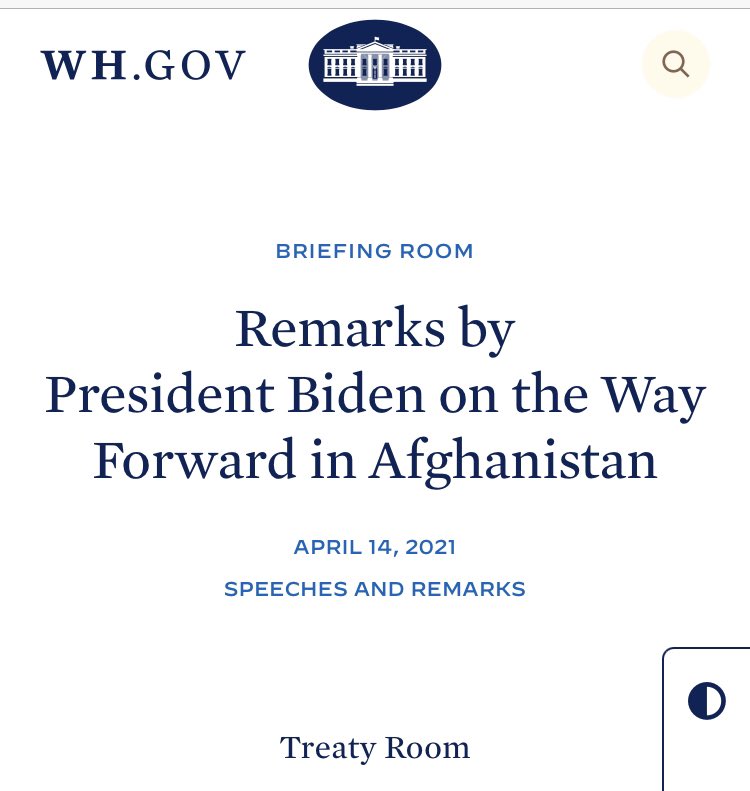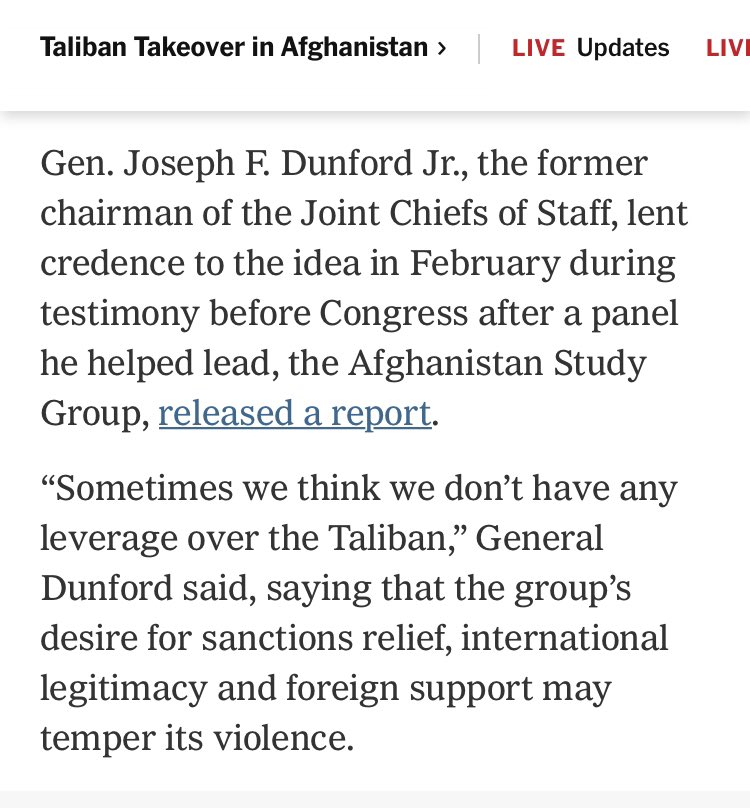No revolution has ever been successful without the use of weapons
Article by Ken Cuccinelli and Jim Presswood in The American Conservative
Reflections on the Looming Revolution in America
Left and right populists must unite to defeat cronyism and make policies that meet the needs of the American people.
America is on the precipice of a second revolution. The first led to the creation of a constitutional republic and the second one could end it. The Democrats, deeply frustrated by the federal government’s dysfunction, are pursuing revolutionary changes. They are especially eager to fundamentally alter the design of the Senate and Electoral College, which serve to protect the interests of states. The most imminent potential change is removal of the Senate filibuster.
The solution to government dysfunction, however, is not revolutionary change that would dramatically intensify today’s partisan war but incremental innovation that enables bipartisan policy through modernizing the country’s ideological coalitions and how they interact. The conservative movement needs to create the institutional capacity required to advance bipartisan legislation on a wide range of issues. The ideological left and right could then effectively engage in joint legislative campaigns around shared interests, beginning with populist initiatives consistent with conservative principles.
As the 18th century British statesman Edmund Burke noted in Reflections on the Revolution in France, “it is with infinite caution” that anyone should pull down or replace structures that have served society well over the ages “without having models and patterns of approved utility” before their eyes. He applied this principle in supporting the revolution in America, while opposing the one in France, where revolutionaries radically (and viciously) transformed the political and societal structures of the country.
The Democrats almost have enough votes to remove the Senate filibuster, which they believe is necessary to overcome partisan gridlock and effectively govern. But instead of partisan gridlock, there would be partisan oppression. In our closely divided country, the parties would take turns imposing their will while earnestly seeking to reverse gains made by the other when in power. Partisan oppression would ensure the republic-killing factionalism that James Madison warned about in Federalist Papers No. 10. This factionalism would almost certainly eliminate any real interest in bipartisan compromise, which has been a defining characteristic of our republic.
Democrats also seek to remove what they derisively call the “anti-democratic” and “outdated” elements of America’s constitutional republic with the goal of moving towards a European-style parliamentary system. Their primary focus is on fundamental changes to the Electoral College and Senate. Some on the left even want to abolish these institutions.
Both institutions serve to represent the interests of states, which remain just as vital today as they were at the nation’s founding. The less populated (i.e., small) states that founded the republic fought hard for these state-focused institutions. They realized that if control of the republic’s institutions was determined solely by population, the big states would run the country and small state interests would not be adequately represented.
The founders resolved this concern for the legislative branch with the Great Compromise, which apportioned Senate membership equally among the states and House membership by each state’s population. For the presidency, they applied the Great Compromise principle to protect small state interests by establishing the Electoral College. This institution is composed of electors selected by the states and the number of electors from each state is based on its total number of representatives in the House and Senate. The creative tension between big states and small states established by the Great Compromise is foundational to our constitutional republic.
In recent years, the state-focused institutions have enabled those Republicans strongly motivated by populism to gain power, dramatically changing American politics. This populism is largely driven by the concerns of people struggling in blue collar towns and rural areas—what could be called “Left Behind America”—where hopelessness and poverty are rampant (features shared with parts of urban America). These regions are less populated, but still politically influential because of the state-focused institutions. Without these institutions, the concerns of these economically depressed regions could be ignored.
The strong alignment of less populated regions across the country with either party should be considered a loudly sounding alarm that a geographic sectionalism has emerged that is harmful to the republic. Instead of trying to fundamentally change the state-focused institutions that are serving as this alarm, the left should be focused on trying to overcome such geographic sectionalism.
President George Washington expressed serious concern in his Farewell Address about parties divided by geography, allowing their leaders to “misrepresent the opinions and aims” of other regions. A deepening metropolitan-rural divide separates the parties. People on either side of the divide hardly know or even understand each other, and false stereotypes are rampant.
Americans across the ideological spectrum have a shared interest in overcoming this divide, which is based far more on economic class and geography than ideology. While the populism that has emerged in electoral politics because of this division is currently increasing polarization, harnessing it to advance bipartisan legislation would help begin to forge a new American unity.
The conservative movement, however, first needs to modernize. The movement, including media outlets and NGOs, is a highly effective force in representing conservative priorities in both electoral politics and in blocking legislation. It lacks, however, significant capacity to advance bipartisan legislation. This deficiency is a principal contributing factor in today’s partisan gridlock.
Conservatives are appropriately reflecting history, yelling “stop” to the radicalized changes sought by the left. But we cannot simply oppose these changes; we must also propose incremental solutions. We need to persuade our fellow Americans that the answer is not removing the constitutional republic’s creative tensions that help resolve conflict and competing interests, but creating new bonds between the ideological left and right.
The first step in developing these new bonds would be building capacity in the conservative movement to advance bipartisan legislation. The institutional cornerstone of this capacity is the issue-specific policy advocacy group with a mission of achieving legislative solutions. Such a group is ideally designed to engage in the advocacy and coalition building needed to move legislation.
An effective group would have deep policy expertise, enabling it to readily identify common ground on often very complex problems. The group would also have good working relationships across the ideological spectrum and throughout its issue area, which is essential to developing coalitions required to advance legislation.
As described in Asymmetric Politics by political scientists Matt Grossman and David Hopkins, the left has a vast number of these groups and they wield tremendous influence. But there are relatively few issue-specific groups on the right. Most of the conservative movement’s policy groups cover multiple issues and lead the fight against the left, making it difficult for them to work with left-of-center allies.
The direct engagement between conservative and progressive issue-specific groups would be especially useful, fostering a creative tension that leads to the kind of innovation that has been a hallmark of America. The solutions developed, much like the U.S. Constitution, would be better than either side could generate on its own.
Such innovation is critical to enact effective and durable legislative solutions to the problems facing Left Behind America, which are quite complex and have confounded Western democracies around the world. Groups representing other ideological categories, such as libertarians and centrists, would continue to be invaluable as they are now, but our country is too polarized and evenly divided to make real progress on national-level issues without conservatives and progressives reaching some degree of agreement.
Enhancing the capacity of state and local-level policy groups representing the conservative grassroots is another piece of conservative movement infrastructure needed to move bipartisan legislation. Advocating bipartisan legislation typically requires professional staff with policy expertise and advocacy sophistication. The conservative grassroots groups, however, generally have very constrained resources, limiting them to electoral politics and policy advocacy focused primarily on blocking legislation.
The conservative donor class has the resources to build the movement’s bipartisan policy advocacy infrastructure. But they have not prioritized investment in policy advocacy generally—the left spends far more in this space. Conservative donors across the ideological spectrum should use their financial power to help unify the conservative movement behind bipartisan legislation.
The initial focus should be on the priorities of Left Behind America. These priorities include helping Americans struggling in these economically depressed regions and reforming regulations in multiple economic sectors. Regulatory reforms would enhance free enterprise and spur innovation, unleashing America’s entrepreneurs. Reforming regulations would also rein in corporate cronyism, helping to drain the proverbial swamp.
Conservative scholars at academic institutions and think tanks have proposed a host of policy solutions that would benefit Left Behind America. The movement needs issue groups to emerge that can advance bipartisan legislation that would enact these solutions.
The Democrats should be eager to help Left Behind America, which made our country into an economic superpower and provides the largest percentage of our armed forces. The working class of these regions is also the same demographic highlighted by President Franklin D. Roosevelt in his “Forgotten Man” speech.
An ideal place to start Left Behind America policy advocacy would be on initiatives that harness populism to advance bipartisan legislation that reforms regulations in multiple economic sectors. The first such initiative in the United States appears to be the Virginia Energy Reform Coalition, which we helped build. This left-right coalition is advocating legislation that includes competitive electricity policy reforms pioneered by President George W. Bush when he was governor of Texas. Enacting the legislation would lower energy bills, benefit the economy, reduce pollution, and rein in corporate cronyism. This left-right electricity reform initiative could readily be scaled to other states and to the national level.
Other sectors ripe for reform include financial services (reining in Wall Street’s megabanks), agriculture (removing barriers faced by smaller-scale farmers practicing good animal and environmental stewardship), and pharmaceuticals (enabling more competitive prescription drug prices).
Harnessing populism to achieve regulatory reforms would also begin to forge a new American unity. Conservatives and progressives can readily agree on many of the policies and they share a deep disdain of cronyism. Regulatory reforms are opposed by powerful corporate cronyists, so the left and right would have to fight together to achieve progress. The battles would build working relationships and even friendships. The working relationships would enable compromise on more divisive issues, such as comprehensive immigration reform that reduces low-wage worker immigration.
Left-right legislative campaigns would also enhance the functionality of Congress. As explained by Yuval Levin in A Time to Build, the institution has essentially lost its ability to achieve durable compromises. He asserts that its members are now far more interested in using it as a platform for waging the culture war and building their personal brands than for lawmaking. Successful left-right campaigns would create strong incentives on both sides of the aisle to make the institution more functional and enact effective legislative solutions to our country’s most pressing problems.
Many in America and around the world believe that the nation’s best days are behind it. Authoritarian regimes, especially China, point to our dysfunction as proof that Western democracies are no longer viable. But America has a long history of innovation and overcoming seemingly insurmountable obstacles. We created the best system of government in the history of the world, and it still is. We just need some incremental innovation to make it work for the 21st century.
https://www.theamericanconservative.com/articles/reflections-on-the-looming-revolution-in-america/


































